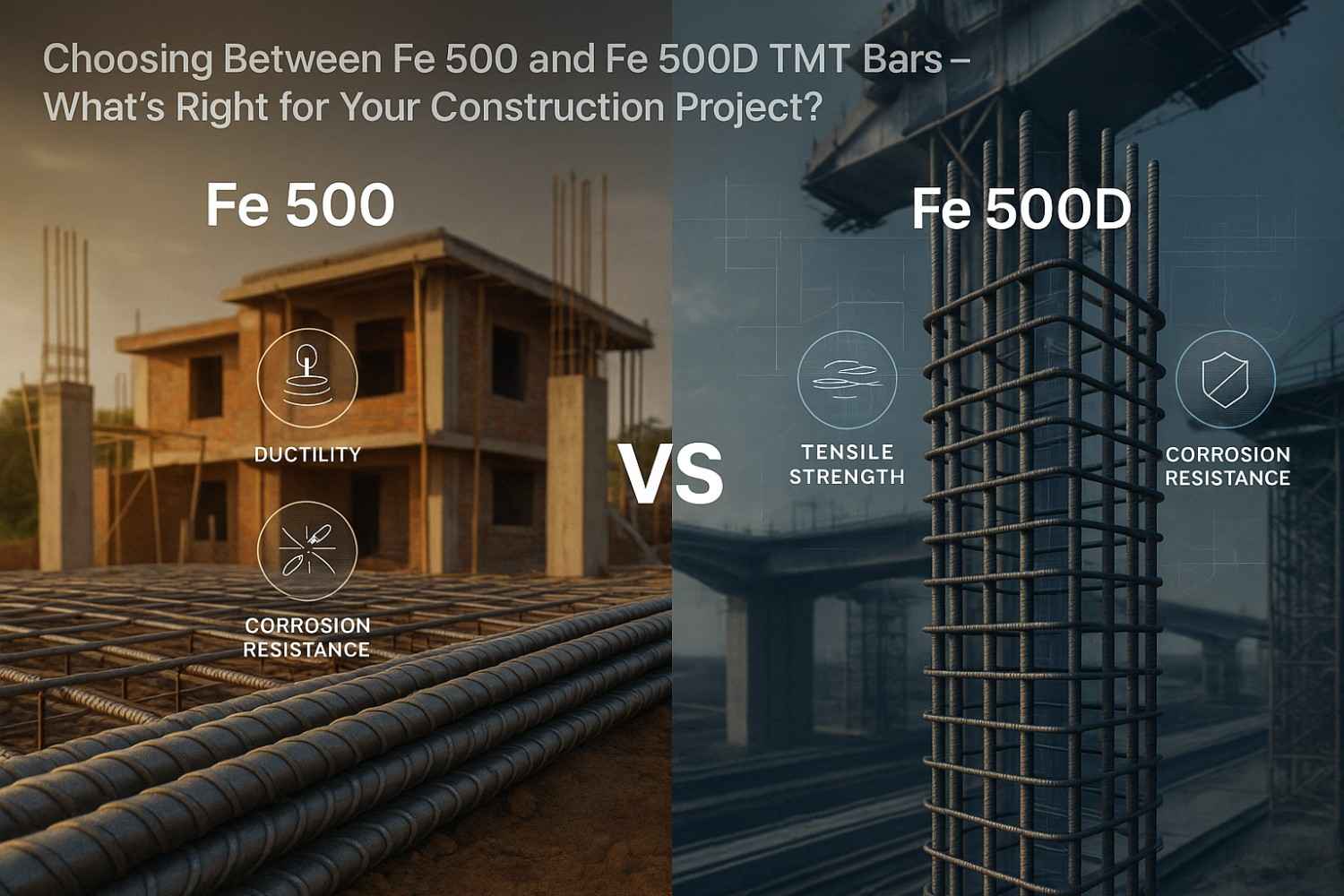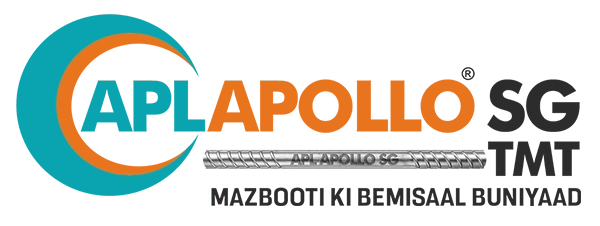
🟩 Introduction
When you’re planning a construction project – whether it’s a multi-storey building or a small commercial warehouse – the choice of steel reinforcement can make or break the structure’s integrity. Best TMT bars, specifically Fe 500 and Fe 500D grades, are two of the most widely used in India’s construction landscape. But how do you decide which one fits your needs better? Let’s break it down.
🟩 Understanding the Basics: Fe 500 vs Fe 500D
Fe 500 TMT Bars are known for their excellent balance of strength and ductility, making them ideal for general construction.
Fe 500D TMT Bars, on the other hand, offer greater ductility – the “D” stands for ductile – making them better suited for regions prone to seismic activity or structures requiring greater flexibility.
🔑 Key Difference:
- Fe 500: Yield Strength – 500 MPa, UTS/YS ratio – ~1.08
- Fe 500D: Same Yield Strength, but lower carbon content and higher elongation (~16%), making it more ductile and earthquake-resistant.
🟩 Where Should You Use Fe 500?
Fe 500 is a smart choice for:
- Low- to mid-rise buildings
- Industrial sheds
- General RCC columns, slabs, and beams
- Projects where cost-effectiveness matters more than flexibility
Many of our clients who build residential housing in Tier-2 cities prefer SG Mart’s Fe 500 TMT Bars due to their reliability and budget-friendliness.
🟩 When Should You Choose Fe 500D?
Opt for Fe 500D TMT bars in:
- Earthquake-prone zones (Zone IV & V)
- Bridges, flyovers, and critical infrastructure
- High-rise buildings and metros
- Locations with wide temperature variations
For instance, in a recent government project in Dehradun – a seismically active region – contractors exclusively used APL Apollo SG Fe 500D TMT bars for their RCC framework due to its superior elongation and shock-absorption capability.
🟩 Interlinking Strength – Not Just the Bars
It’s important to remember that TMT bars don’t work alone. They’re supported by MS Binding Wires and Welding Rods during cage formation and structural anchoring.
🔗 You may also like to read:
Together, they create a tightly integrated and load-bearing RCC framework that performs under pressure – literally.
🟩 Final Thoughts: Which Should You Choose?
Both Fe 500 and Fe 500D TMT Bars offer unmatched performance, but the best choice depends on your project requirements, geographic location, and budget constraints.
✅ If you’re building in non-seismic zones or small structures, Fe 500 is more than adequate.
✅ For seismic zones, high-rise projects, or government infrastructure, Fe 500D is the gold standard.
And with APL Apollo SG TMT bars, you’re assured of IS 1786 compliance, corrosion resistance, and availability in all standard lengths and sizes.
🟩 Conclusion
Choosing the right TMT bar isn’t just a technical decision – it’s a strategic one that affects your structure’s safety, durability, and cost-efficiency. Whether you go with Fe 500 or Fe 500D, SG Mart ensures quality, availability, and technical support across India.
🧱 Build better. Build stronger. Build with APL Apollo SG TMT.




Pingback: Why Fe 550 TMT Bars Are the Top Choice for High-Rise Buildings in India
Pingback: Fe 500 vs Fe 550 TMT Bars | Fe 500D vs Fe 550D Explained